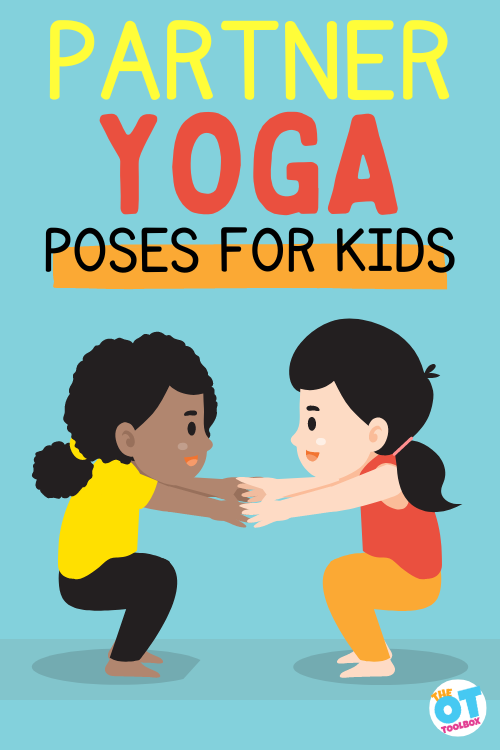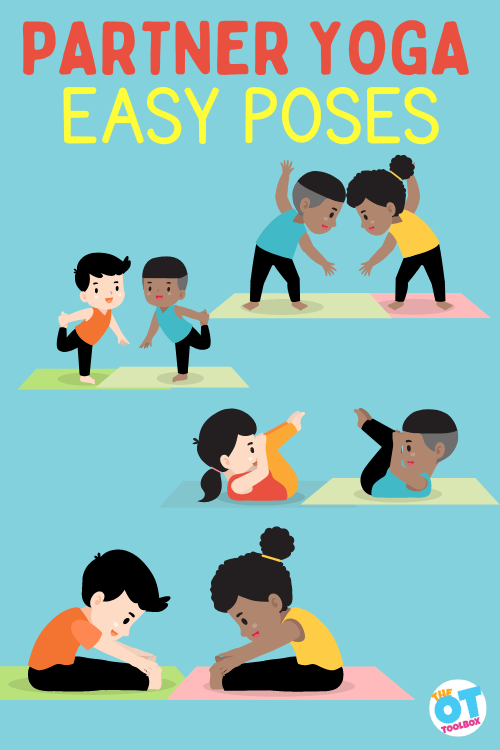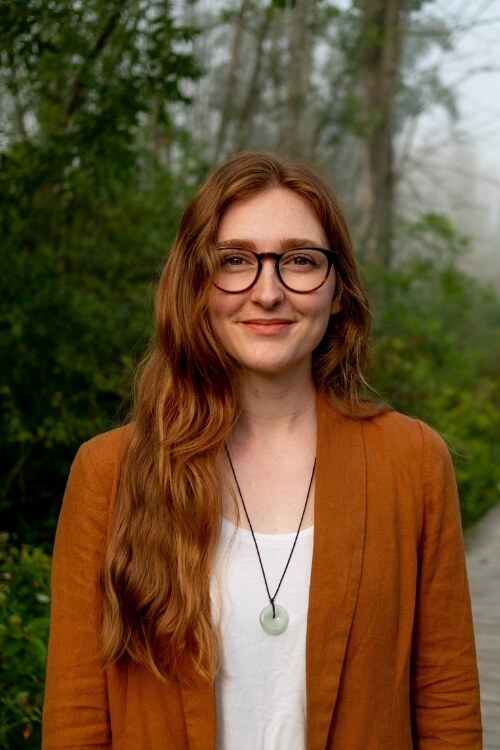If you’re looking for a fun and healthy activity to do with a group of kids, buddy yoga poses for kids are just what you need. Kids Yoga Partner Pose A great option for small groups, it not only promotes gross motor coordination, physical fitness and self-regulation support, but also encourages social connection and teamwork. In this article, we explore the benefits of couple yoga for kids and share some beginner, intermediate, and advanced couple yoga poses for kids of all ages and abilities.

Kids Partner Yoga
Yoga is an excellent way to keep kids active and healthy while promoting physical and mental health. Some of the benefits of yoga for kids include:
In addition to these benefits, partner yoga for kids has the added benefit of promoting social skills, problem solving, and teamwork. By working with a partner or in a team, children learn valuable skills such as communication, cooperation and trust.
It may be worth trying a single yoga pose before jumping straight into kids partner yoga. But if you start where your child is, anything is possible! We’ve got tons of cute yoga card decks to inspire your next steps:
Unicorn Yoga
Penguin Yoga
Butterfly Yoga and Movement
child pose exercises
cross crawling exercise
Some partner yoga poses for kids can include the list below. We’ve also broken down the various partner yoga for kids into difficulty levels according to individual needs as a way of grading this movement activity.
- double tree
- double down dog
- partner fold forward
- partner backbend
- partner boat
- Seated forward leg bend with partner
- partner wheel
- double warrior pose
- partner twist
- double baby pose
- partner plate
- Flying Lizard
- partner shoulder stand
- double camel
- Partner Supported Handstand

Easy Partner Yoga Poses for Kids
Let’s start with some really easy partner yoga poses! This is a great place to start for young kids or buddy yoga for any age. Just coordinating body movements with another person can challenge body awareness, conditioning, and movement planning!
Keep your group’s physical abilities and coordination in mind (we don’t want anyone getting hurt!), and creatively adapt these poses as needed to benefit the group. You can even let the kids pose themselves so they can really get involved!
Try these easy yoga poses for 2:
Partners fold forward: Partners sit facing each other in a straddle stretch, and you sit upright with your legs in front of you in a “V.” Partners hold feet together and hold hands, taking turns stretching forward and backward.
Partner Seated Twist: Sit back-to-back with your partner, legs crossed. Raise your arm, reach to the right and twist. Your left hand should rest on your right knee, and your right hand should rest on your partner’s left knee. Don’t forget the two-way twist!
Lizard sunbathing on a rock: A crazy fun name, but it’s easier than it sounds! As a “rocker” the companion will curl up into a child’s pose. The “lizard” partner puts his arms over his head, with his legs straight out onto the rock, arching his back over the back of the “rock.”
Two chairs: Stand back-to-back with your partner, elbows locked. Squat down together until your body is like a chair — your knees should be at right angles.
Moderate Partner Yoga Poses
Next, let’s get into slightly more challenging poses when it comes to yoga for two kids or solo. These partner poses can be slightly more difficult because they require more balance, coordination, and partner involvement.
This can be a real challenge for kids who are struggling with body awareness and strength conditioning, but as occupational therapy practitioners we know the value of using an activity to challenge and build skills, while building skills Cultivate just the right amount of challenge.
Partner Tree Pose: Standing shoulder to shoulder with your partner, raise your inner arm and “high-five” your partner as high as you can. Your inner buttocks should touch and lean against each other. Lift your outer foot and place it on your inner thigh. Place your outside arm on your hip, suspended in the air, or on your partner’s other hand. You have become a tree with your partner!
double warrior I: Partners face each other and lunge forward with right leg. Their hind legs should be in an “x” shape. Raise your arms and reach back slightly to touch your partner’s hand.
double anti fighter: Partners stand side by side with legs apart. The outer legs are bent and the rear legs are straight, just like Warrior II. Partners lean back in reverse warrior pose, touching fingertips with outside arm. The inner arm can hold the hand or rest on the thigh.
partner boat: Sit facing your partner with legs straight in front of you. Lift your feet off the ground and bring your feet together in the air while balancing on your sit bones. Pass your hands across or around your legs to help you and your partner maintain balance.
Senior Partner Yoga Pose
These kids yoga poses require 2 people and more advanced motor skills, balance and coordination, but the benefits are huge. These partner yoga poses are ideal for individuals who require more strenuous work commitment, greater balance and movement planning challenges.
Double down dog: One partner will come into downward facing dog. The second partner will start in downward facing dog, carefully placing the feet on the partner’s back or hips rather than on the ground.
balance warrior: This partner position is in Warrior III, front legs straight, body leaning forward, arms outstretched, back legs lifted up into the air, making the body in a “T” shape. Face your partner so that when you reach your arms out in front of you, you touch each other’s shoulders and balance together.
Bridges and Shoulders: A partner will come into Bridge Pose, lying on their back with their hips up. The second partner will start in Bridge Pose, but place the feet on the partner’s knees and push up a bit higher into a Shoulderstand.
Forward Folding for Plowing and Sitting: Partner one is Plow Pose, where they lie on their back with their feet raised overhead so they’re kind of folded over their stomachs. The second partner places their legs on the plow and leans forward, folding forward in a sitting position. Partners reach out for a handshake—a gesture that looks a bit like an infinity sign!
Kids Partner Yoga Tips
There are many ways to target specific skills with yoga activities. Try some of these tips to cultivate all the benefits of working with your child on yoga:
- Make sure to switch your partner’s position to a pose where they have different tasks!
- Switch sides, too, so that both sides get the same level of exercise or stretch.
- Encourage children to listen to their bodies, keep breathing, and laugh when they fall.
- Consider using the ideas listed above at home before moving on to a friend or group for therapy.Offer the ideas listed above as options Home Yoga Poses. This can provide all the benefits while participating in a more comfortable environment.
All in all, yoga poses for kids for 2 is a fun and healthy activity for kids that promotes physical health, mental and emotional health, and social connection.
By practicing a wide variety of poses—flexible, balancing, and strengthening—children of all ages and abilities can enjoy the benefits of yoga while developing valuable teamwork and communication skills.

Sydney Thorson, OTR/L, is a new occupational therapist practicing school-based therapy.she
With a background in human development and family studies, she is passionate about
Individualized and meaningful therapy is provided for each child and their family.Sydney and
Children’s author and illustrator, always working on new and exciting projects.


